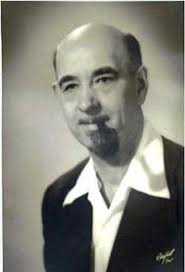Jean-Louis Forain was a French artist, who specialized in painting, print making, and illustration. He was born in Reims in France on 23rd October 1852 and moved to Paris with his family when he was eight years old.
During the First World War, Forain's illustrations honoured the patriotism of his contemporaries, and he enlisted in the Section de Camouflage under Lucien-Victor Guirand de Scévola. He was also a war correspondent. A number of his caricatures published in the popular press at the time became posters and postcards.
 |
| Untitled caricature by Jean-Louis Forain |
In his later years, Forain created numerous scenes of the Law Courts and other Parisian institutions and social satire caricatures of late 19th and early 20th century French life.
In 1931, shortly before his death on 11th July, Forain was made a member of the Royal Academy of Arts in London. He was one of France's most famous and revered artists during his time. He was, perhaps, most highly respected for his numerous drawings which chronicled and commented on Parisian city life at the end of the 19th century. Followers and admirers of Forain's work included Henri de Toulouse-Lautrec.
Sources: Artists of the First World War Facebook Page
https://en.wikipedia.org/wiki/Jean-Louis_Forain









